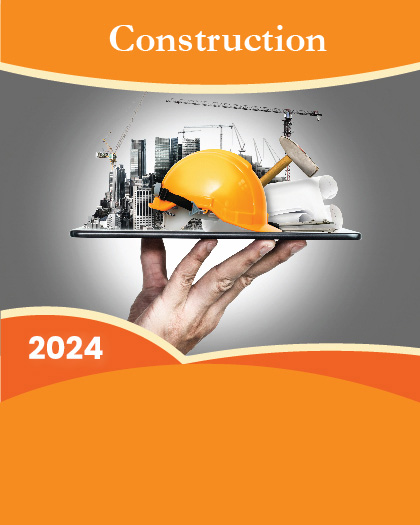1. Research Framework
1.1. Research Objective
1.2. Product Overview
1.3. Market Segmentation
2. Executive Summary
3. India Prefabricated Buildings Market Insights
3.1. Industry Value Chain Analysis
3.2. DROC Analysis
3.2.1. Growth Drivers
3.2.1.1. Growing adoption in commercial and industrial sectors
3.2.1.2. Increasing sustainability and environmental concerns
3.2.1.3. Government initiatives and regulations
3.2.2. Restraints
3.2.2.1. High initial investment
3.2.2.2. Transportation challenges related to large, prefabricated modules
3.2.3. Opportunities
3.2.3.1. Increasing demand for housing in urban areas
3.2.3.2. Infrastructure development in India
3.2.3.3. Innovations in materials, manufacturing processes, and design software
3.2.4. Challenges
3.2.4.1. High competition with traditional construction methods
3.2.4.2. Lack of skilled workers in the prefabricated construction industry
3.3. Technological Advancements/Recent Developments
1.1. Regulatory Framework
1.2. Porter's Five Forces Analysis
1.2.1. Bargaining Power of Suppliers
1.2.2. Bargaining Power of Buyers
1.2.3. Threat of New Entrants
1.2.4. Threat of Substitutes
1.2.5. Intensity of Rivalry
2. India Prefabricated Buildings Market: Marketing Strategies
3. India Prefabricated Buildings Market: Pricing Analysis
4. India Prefabricated Buildings Market Overview
4.1. Market Size & Forecast, 2025-2033
4.1.1. By Value (USD Billion)
4.2. Market Share and Forecast
4.2.1. By Type
4.2.1.1. Skeleton System
4.2.1.2. Panel System
4.2.1.3. Cellular System
4.2.1.4. Combined System
4.2.2. By Material Type
4.2.2.1. Concrete
4.2.2.2. Glass
4.2.2.3. Metal
4.2.2.4. Timber
4.2.2.5. Other Materials (Steel, Wood, Composites)
4.2.3. By Application
4.2.3.1. Residential
4.2.3.2. Commercial
4.2.3.3. Others (Industrial, Institutional, Infrastructure)
4.2.4. By Region
4.2.4.1. North India
4.2.4.2. South India
4.2.4.3. East India
4.2.4.4. West India
5. North India Prefabricated Buildings Market Overview
5.1. Market Size & Forecast, 2025-2033
5.1.1. By Value (USD Billion)
5.2. Market Share & Forecast
5.2.1. By Type
5.2.2. By Material Type
5.2.3. By Application
6. South India Prefabricated Buildings Market Overview
6.1. Market Size & Forecast, 2025-2033
6.1.1. By Value (USD Billion)
6.2. Market Share & Forecast
6.2.1. By Type
6.2.2. By Material Type
6.2.3. By Application
7. East India Prefabricated Buildings Market Overview
7.1. Market Size & Forecast, 2025-2033
7.1.1. By Value (USD Billion)
7.2. Market Share & Forecast
7.2.1. By Type
7.2.2. By Material Type
7.2.3. By Application
8. West India Prefabricated Buildings Market Overview
8.1. Market Size & Forecast, 2025-2033
8.1.1. By Value (USD Billion)
8.2. Market Share & Forecast
8.2.1. By Type
8.2.2. By Material Type
8.2.3. By Application
9. Competitive Landscape
9.1. List of Key Players and Their Offerings
9.2. India Prefabricated Buildings Market Share Analysis, 2023
9.3. Competitive Benchmarking, By Operating Parameters
9.4. Key Strategic Developments (Mergers, Acquisitions, Partnerships, etc.)
10. Impact of Escalating Geopolitical Tensions on India Prefabricated Buildings Market
11. Company Profiles (Company Overview, Financial Matrix, Competitive Landscape, Key Personnel, Key Competitors, Contact Address, Strategic Outlook, and SWOT Analysis)
11.1. Everest Industries Limited
11.2. Satec Envir Engineering (India) Private Limited
11.3. Epack Prefab
11.4. Speed 4 Prefab Solutions Pvt. Ltd
11.5. Balarka Fabricon Private Limited
11.6. Loom Crafts
11.7. Angath Exterior & Interior
11.8. Primex Building Systems
11.9. Champion Prefabs
11.10. Interarch Building Products Pvt Ltd
11.11. Other Prominent Players
12. Key Strategic Recommendations
13. Research Methodology
13.1. Qualitative Research
13.1.1. Primary & Secondary Research
13.2. Quantitative Research
13.3. Market Breakdown & Data Triangulation
13.3.1. Secondary Research
13.3.2. Primary Research
13.4. Breakdown of Primary Research Respondents, By Region
13.5. Assumptions & Limitations
*Financial information of non-listed companies can be provided as per availability.
**The segmentation and the companies are subject to modifications based on in-depth secondary research for the final deliverable























